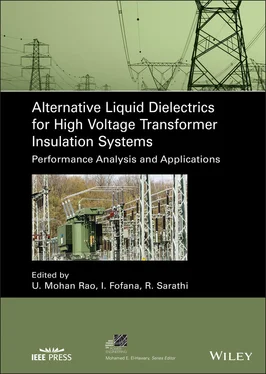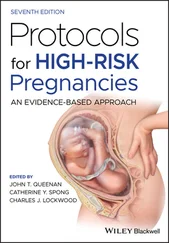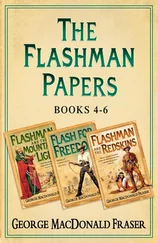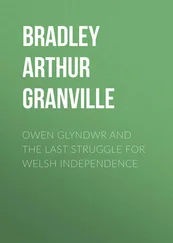Nathaniel TaylorSchool of Electrical Engineering and Computer Science, KTH ‐ Royal Institute of Technology, Stockholm, Sweden
Lijun YangState Key Laboratory of Power Transmission Equipment & System Security and New Technology, Chongqing University, Shapingba, Chongqing, China
Wenyu YeState Key Laboratory of Power Transmission Equipment & System Security and New Technology, Chongqing University, Shapingba, Chongqing, China
For more than a year my coeditors are working on the progress of this book with certain expert advice. I would like to thank Professor Issouf Fofana from the University of Quebec at Chicoutimi (UQAC), Canada, and Professor Ramanujam Sarathi from the Indian Institute of Technology Madras, India, for being the fellow editors of this book. On behalf of the editors, I would like to take this opportunity to thank all the lead authors and individual contributors of this book for their cooperation, support, and patience at different stages.
A special note of thanks to the PhD graduate students and researchers at the Research Chair on the Aging of Power Network Infrastructure (ViAHT) at UQAC, Canada, and researchers at Institut de Recherche d'Hydro‐Québec, Varennes, Canada, for their research collaboration. I would also like to thank Dr. P. Rozga from the Lodz University of Technology, Poland, for his expert collaboration on the topic “Prebreakdown phenomena”. The editors of this book would like to thank the anonymous reviewers and project handling staff of the Wiley‐IEEE press for their cooperation.
I would like to acknowledge the support and cooperation extended by the beloved family members of my coeditors and all the contributors. In particular, I would like to extend my deepest gratitude to my wife Ms. Jayasree Thota, for her support in the successful accomplishment of this book.
U. Mohan Rao, Editor

Dr. U. Mohan Rao
University of Quebec at
Chicoutimi, Canada
Dreams are dreamt in life, but a few with determination are realized and accomplished by us. This book on the topic of “ Alternative Dielectric Liquids for Transformer Insulation Technology ” is the outcome of that determination I had developed since my acquaintance waith Professor Issouf Fofana at the International Research Center on Atmospheric Icing and Power Network Engineering (CenGivre) at the University of Quebec at Chicoutimi (UQAC). Finally, two and a half years later on the second day of April 2021, I am happy to write this editorial on the realization of this book, which has been enriched with contents derived out of paramount discussions I have had with Professor Fofana at various occasions. In the early 2019, we initiated the idea of delivering a short e‐book to the scientific community on the modern knowledge of ester liquids and potential challenges on new‐generation insulating fluids. The development of this project kicked off in the mid‐2019s after Professor Fofana revitalized the IEEE DEIS Technical committee of Liquid Dielectrics (TCLD) as a technical committee chair. It is also my immense pleasure and pride to have contributed to the TCLD activities as an invited committee member. Further around late 2019, Professor Fofana and I decided to implement the book project and an international study group under the umbrella of the TCLD by inviting potential research groups to contribute. In the second quarter of 2020, I had a pleasure to propose the idea of this book volume to the Wiley‐IEEE press, during which I had the privelage to invite Professor Ramanujam Sarathi from the Indian Institute of Technology, Madras, India, who joined as a fellow coeditor for the present edition. This book includes edited chapters contributed by renowned scientist from around the world from countries, namely, Australia, Canada, China, India, New Zealand, Poland, Spain, Sweden, Turkey, and United Arab Emirates. Initially planned to be published by the end of 2020, this book, like many other projects worldwide, has suffered a slight delay due to the influence of the COVID‐19 global pandemic.
Increasing requirements of electricity at an alarmingly rapid rate due to population and industrial growth have caused severe energy crises throughout the world. The shortage of fossil fuels (such as coal, crude oil, and natural gas) amplifies this crises, by progressively diminishing the availability of conventional methods of power generation. In addition, emission of harmful greenhouse gases (by‐products of fossil fuels) discourages further consideration of conventional resources as a long‐term future solution. The growing concern over issues related to energy security and global warming has resulted in the evolution of renewable energy resources and potential alternatives with environmental and economic benefits. The recent Paris climate accord signed by 195 countries, dealing with the mitigation and adaptation of greenhouse gas emissions and the divestment from fossil fuels, has spurred the exponential development and demand of renewable energy‐based technologies. One such green and alternative candidate to mineral insulating oil (extracted from crude petroleum stocks) is ester‐based dielectric liquid. Therefore, this book is dedicated to reach the readers across the globe in transferring the contemporary knowledge on these new dielectric fluids. The following paragraphs provide an insight of the scientific contents of the book
The first chapter gives a general introduction to the key topics of the book authored by the editors (U. Mohan Rao and I. Fofana) and co‐authored by Dr. Rodriguez Mariela, Institut de recherche d'Hydro‐Québec, Canada. This chapter covers the fundamentals of the transformer oil–paper insulation and introduction to various insulating liquids. The second chapter contribution from the Indian Institute of Technology Guwahati, India, and Xi’an Jiaotong University, Shaanxi, China, provides the details on the development and evaluation of natural ester liquids. Given the fact that the insulating liquids should have a high degree of compatibility with solid insulating liquids, the third chapter originating from the University of Cantabria, Spain, and BEST Transformer, Turkey, addresses the compatibility of the ester liquids with cellulose insulating materials. Authors affirm that the esters are not only compatible with cellulosic materials, but they also protect the cellulose, reducing its aging rate in comparison with traditional oil. The fourth chapter, authored by researchers from the high voltage laboratory at Indian Institute of Technology, Madras, India, and HVDM Research Group at Khalifa University, UAE, presents the details on the degradation and characterization of ester liquids.
The fifth chapter is authored by researchers from the Research Chair on the Aging of Power Network Infrastructure from the University of Quebec at Chicoutimi, Canada, which emphasizes the monitoring of the decay products of the new insulating liquids. The authors have demonstrated the monitoring of soluble and colloidal particles in ester liquids and spanned the discussion to the feasibility of using fuller’s earth for regeneration of ester liquids. The sixth chapter arises out of a research collaboration between Lodz University of Technology, Poland, the University of Quebec at Chicoutimi, Canada, and the Institut de recherche d'Hydro‐Québec, Canada. This chapter is an extended and updated version of the International study group article published in the IEEE Transactions on Dielectrics and Electrical Insulation in Volume: 27, Issue: 5, October 2020, with a primary focus on the pre‐breakdown phenomenon of the ester liquids.
Читать дальше













